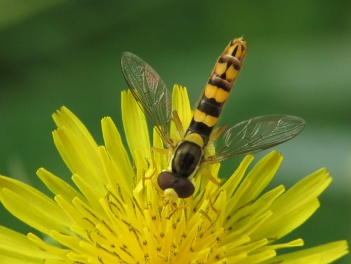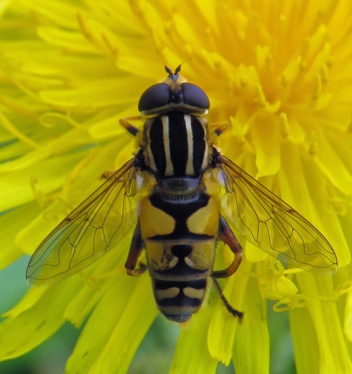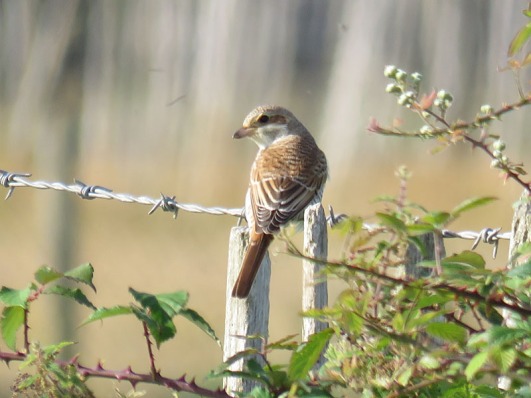Our special year ends as the New Year begins sadly the last few days saw us shrouded in fog so the conclusion was not what I had hoped for. I had planned to repeat January 1st with a visit to Titchwell and Holme but instead I stayed home!
I have really enjoyed the year and am very pleased that we decided to take a year out pursuing wings…and other things! Now the time has come to look back and see how it went, the good bits and the even better bits. Time to check through the lists and make sure nothing has been left off or doubled up and maybe pick out some best bits.
What a difference a year makes, last January 1st was bright and dry, today has been wet all day long! I was glad that no outings were planned instead we have had a lovely day with family around.
Lists have been checked and I can reveal that our total number of things seen both winged and otherwise, is 729 and the nearest guess to that was 750 given by Peter so he is the winner!!!
I am pleased to say that we saw 257 different birds, 26 of them were life ticks for me so 10% much higher than I would have imagined. Peter asked how many things in total were life tics for us and when we looked that shot the percentage way up.
We had 4 new mammals out of a total of 25, 53 new insects from 85, 77 new macro moths from 245, whilst micros was 58 new from 70! Now some of these figures may not be entirely accurate but if I can’t recall seeing things before and have no record of them I am counting them as life ticks. Carrying on, 7 dragonflies out of 10 were new, 4 damselflies from 7 and 12 butterflies from 25. No new amphibians or reptiles, to be honest we failed miserably in that category!
Now totalling it all up that makes 241 life ticks from a total of 729 things seen, almost exactly one third!!!
It is hard to pick favourites but I will try just a few. I know Ian’s favourite picture of the year is this one.

It was taken in Scotland on a wonderful day, we got three of our four mammal ticks that day! This Pine marten plus beavers and Daubenton’s bat and really was a day to remember!!!
Our week on Mull with Ruth, Stu and Sprocket was brilliant, the company and the things we saw, smashing!
A few weeks spent ‘down south’ gave us chances to spend time with Brian and Margaret and ended with a week spent down in Devon with Janice and Chris. Excellent to catch up whilst seeing new places and spotting birds, finding a new-born calf in the New Forrest was an unexpected bonus!
It is difficult to choose favourite birds but I will pick a few out, I dare say if I were to pick them another day I may make different choices! If you click on a photo they should tell you what they are
I selected these fairly swiftly just scrolling through the photos I have used on here before. Some were chosen for rarity others I simply love!
Another highlight have been the occasions that our grandchildren have been out with us and less often Peter too. One special day was spent at Minsmere the day we saw the purple swamphen another at Burnham.
We have spent time with Alan and Judy both in Norfolk and Gloucestershire, all very enjoyable and Alan’s new-found love of insects gave our list a boost!
An all too brief visit to Stephen and Pauline did at least mean we saw all of our siblings which was lovley but an all too rare occurance!
Just a few moths so they don’t feel left out!
I had better stop reminiscing my way through the year and get some lists posted! I may do another blog or two and tel you about some faourite places and things etc but not today. Before the lists I just want to thank you for reading my blogs, it is appreciated as are any comments (on here please not FB as they get lost!)
A big thank you to friends and family that encouraged us to take this year out and have not minded me either not making arrangments in the first place of cancelling them to go and see a bird!
The biggest thank you goes to Ian, doing this year would not have been half the fun. His golf has gone by the way side which I didn’t think would ever happen and I hpe it picks up again now we have crossed into 2017! We have managed no to tfall out (although a couple of motoring incidents came close!!!) and have spent more time together than I can remember.
So I wish you all a happy 2017, may you find peace and happiness and enjoy the living creatures you encounter. Hope to see you before too long 🙂
Now the lists and you alread know they contain a totola of 729 living creatures!!!
First the birds 257 of which 26 were life ticks!
- Mute Swan
- Bewick Swan
- Whooper Swan
- Bean Goose
- Pink-footed Goose
- White-fronted Goose
- Greylag Goose
- Canada Goose
- Barnacle Goose
- Brent Goose
- Egyptian Goose
- Common Shelduck
- Muscovy duck
- Mandarin Duck
- Eurasian Wigeon
- Gadwall
- Eurasian Teal
- Mallard
- Pintail
- Garganey
- Shoveler
- Red-crested Pochard
- Common Pochard
- Ferruginous Duck *
- Tufted duck
- Greater Scaup
- Common Eider
- Long-tailed Duck
- Common Scoter
- Velvet Scoter
- Goldeneye
- Smew
- Hooded merganser *
- Red-breasted Merganser
- Red Grouse
- Black Grouse
- Goosander
- Red-legged Partridge
- Grey Partridge
- Common Pheasant
- Golden Pheasant
- Little Grebe
- Great Crested Grebe
- Red-necked Grebe *
- Slavonian Grebe
- Black-necked Grebe
- Fulmar
- Manx Shearwater
- Gannet
- Cormorant
- Shag
- Bittern
- Cattle Egret
- Little Egret
- Great Egret
- Grey Heron
- White Stork
- Glossy Ibis
- Spoonbill
- Red Kite
- White-tailed Eagle
- Marsh Harrier
- Hen Harrier
- Pallid Harrier *
- Goshawk *
- Eurasian Sparrowhawk
- Common Buzzard
- Rough-legged Buzzard
- Golden Eagle
- Osprey
- Kestrel
- Merlin
- Hobby
- Peregrine Falcon
- Water Rail
- Corn Crake
- Moorhen
- Western purple swamphen*
- Coot
- Common Crane
- Great bustard *
- Oystercatcher
- Black-winged Stilt
- Pied Avocet
- Stone-curlew
- Little ringed Plover
- Ringed Plover
- Dotterel
- European Golden Plover
- Grey Plover
- Lapwing
- Great Knot*
- Knot
- Sanderling
- Little Stint
- Temminck’s Stint
- Pectoral Sandpiper
- Curlew Sandpiper
- Purple Sandpiper
- Dunlin
- Broad-billed Sandpiper *
- Ruff
- Jack Snipe
- Common Snipe
- Long-billed Dowitcher *
- Woodcock
- Black-tailed Godwit
- Bar-tailed Godwit
- Whimbrel
- Curlew
- Spotted Redshank
- Common Redshank
- Common Greenshank
- Lesser Yellowlegs
- Green Sandpiper
- Wood Sandpiper
- Common Sandpiper
- Ruddy Turnstone
- Grey Phalarope
- Arctic Skua
- Mediterranean Gull
- Little Gull
- Black-headed Gull
- Common Gull
- Lesser Black-backed Gull
- Herring Gull
- Iceland Gull
- Glaucous Gull *
- Great Black-backed Gull
- Kittiwake
- Caspian Tern *
- Sandwich Tern
- Common Tern
- Arctic Tern
- Common Guillemot
- Razorbill
- Black Guillemot
- Puffin
- Rock Pigeon
- Stock Pigeon
- Wood Pigeon
- Collared Dove
- Turtle Dove
- Rose-ringed Parakeet *
- Cuckoo
- Barn Owl
- Little Owl
- Tawny Owl
- Short-eared Owl
- Common Swift
- Common Kingfisher
- European Bee-eater *
- Hoopoe
- Wryneck
- Green Woodpecker
- Great Spotted Woodpecker
- Lesser Spotted Woodpecker
- Wood Lark
- Sky Lark
- Shore Lark (horned lark)
- Sand Martin
- Swallow
- Red-rumped Swallow *
- House Martin
- Tree Pipit
- Meadow Pipit
- Rock Pipit
- Water Pipit
- Yellow Wagtail (Grey-headed)
- Grey Wagtail
- Pied Wagtail
- Bohemian Waxwing
- Dipper
- Wren
- Dunnock
- Siberian Accentor*
- Robin
- Common Nightingale *
- Bluethroat*
- Red-flanked Bluetail
- Black Redstart
- Common Redstart
- Whinchat
- Stonechat
- Isabelline Wheatear*
- Desert Wheatear
- Wheatear
- Ring Ouzel
- Blackbird
- Fieldfare
- Song Thrush
- Redwing
- Mistle Thrush
- Cetti’s Warbler
- Grasshopper Warbler
- Sedge Warbler
- Eurasian Reed Warbler
- Great Reed Warbler*
- Dartford Warbler
- Barred Warbler
- Lesser Whitethroat
- Whitethroat
- Blackcap
- Yellow-browed Warbler
- Eastern Crowned Warbler *
- Radde’s Warbler*
- Dusky Warbler*
- Wood Warbler
- Common Chiffchaff
- Willow Warbler
- Goldcrest
- Firecrest
- Spotted Flycatcher
- Red-breasted Flycatcher
- Pied Flycatcher
- Bearded Tit
- Long-tailed Tit
- Marsh Tit
- Willow Tit
- Crested Tit *
- Coal Tit
- Blue Tit
- Great Tit
- Nuthatch
- Treecreeper
- Penduline tit *
- Red-backed Shrike
- Great Grey Shrike
- Jay
- Magpie
- Jackdaw
- Rook
- Crow
- Hooded Crow
- Common Raven
- Starling
- House Sparrow
- Tree Sparrow
- Chaffinch
- Brambling
- Serin *
- Greenfinch
- Goldfinch
- Siskin
- Linnet
- Twite
- Lesser Redpoll
- Mealy Redpoll
- Common Crossbill
- Bullfinch
- Hawfinch
- Lapland Longspur
- Snow Bunting
- Yellowhammer
- Cirl Bunting
- Reed Bunting
- Corn Bunting
Mamals next 4 of the 25 were new
- Rabbit.
- Stoat
- Hare
- Grey squirrel
- Common seal
- Roe deer
- Red deer
- Muntjak deer
- Sperm whale *
- Grey seal
- Otter
- Weasel
- Bank vole
- Fallow deer
- Red squirrel
- Pine marten *
- Beaver *
- Daubenton’s bat *
- Common pipistrelle
- Common shrew
- Water vole
- Hedgehog
- Pygmy shrew
- Field vole
- Chinese water deer
Insects and other bits and bobs 53 of the 85 were new to me the ones marked with * are the ones NOT new
- Common Wasp*
- Ladybird 7 spot*
- Ladybird harlequin
- Lacewing green*
- Lacewing brown
- Bloody nosed beetle (Timarcha tenebricosa)
- Red tailed Bumble bee
- White tailed Bumble bee*
- Honey bee*
- Hornet*
- Garden snail*
- Slug*
- Wood ants*
- Scottish wood ants
- Mining bees
- Froghopper
- Hawthorn shieldbug
- Two banded longhorn beetle
- Poplar leaf beetle
- Woodlouse*
- Earwig*
- Earth worm*
- Wolf spider
- Green dock beetle
- Green leafhopper
- Bee fly*
- Green sawfly
- Dark bush-cricket
- Pantallon bee
- Bee-wolf
- Daddy-long-legs spider
- Ophion obscratus (wasp)
- Cock chaffer
- House spider*
- Money spider*
- Zebra spider
- Green fly *
- Black fly*
- Red spider mite*
- Red ant*
- Helophilus pendulus (Sun (hover) fly)
- Dasysyrphus albostriatus (hover fly)
- Sphaerophoria scripta ( long hoverfly)
- Eupeodes luniger (hoverfly)
- Common field grasshopper
- Meadow grasshopper
- Mottled grasshopper
- Centipede*
- Millipede *
- Harvestman *(Dicranopalpus ramopus)
- Common sexton beetle* (Nicrophorus vespilloides)
- Black sexton beetle (Nicrophorus humator)
- Common green shieldbug*
- Buff tailed bumble bee
- Southern oak bush cricket
- Pond skaters*
- Water boatmen*
- Caddisfly
- Bradycellus verbasci (moth trap invader!)
- Common green grasshopper*
- Sitona Lepidus (small beetle)
- Nowickia ferox (fly)
- Tachina grossa (bee-face fly!)
- Sargus flavipes-( Yellow-legged Centurion)
- Common Carder Bumblebee
- Garden spider*
- Red-legged shieldbug (Pentatoma rufipes)
- Black Kneed Capsid (Blepharidopterus)
- Nigma walckenaeri (little green spider!)
- Ladybird 2 spot*
- Birch shield bug
- Eupterx urticae (tiny nettle bug)
- Speckled bush-cricket
- Chrysolina americana ( Rosemary leaf beetle )
- Crane fly*
- Box shield bug
- Grove snail
- Small black ant *(Lasius niger)
- Large black ant *(Formica fusca)
- Nemorilla floralis (black and white fly)
- Devil’s coachhorse (Ocypus olens)
- Nursery spider (Pisaura mirabilis)
- Scorpian fly (Panorpa communis)
- Long-winged Conehea
- Dock bugMacro Moths 245 which includes 77 new ones
Angle shades
Autumnal moth
Autumnal rustic
Barred sallow
Barred straw
Barred yellow
Beaded chestnut
Beautiful golden Y
Beautiful hook-tip
Black arches
Black rustic
Blackneck
Blair’s shoulder-knot
Blood-vein
Bordered beauty
Bordered pug
Brindled beauty
Broad-bordered yellow underwing
Bright-line brown-eye
Brimstone
Brindled beauty
Brindled pug
Brown rustic
Brown-line bright-eye
Brown-spot pinion
Brown-tail
Buff arches
Buff ermine
Buff tip
Burnished brass
Cabbage moth
Canary-shouldered thorn
Centre-barred sallow
Chestnut
Chinese character
Cinnabar
Clay
Clouded border
Clouded drab
Clouded silver
Clouded-bordered brindle
Coast dart
Common carpet
Common emerald
Common footman
Common marbled carpet
Common pug
Common Quaker
Common rustic
Common swift
Common wave
Common wainscot
Common white wave
Copper underwing
Coronet
Coxcomb prominent
Currant pug
Cypress pug
Dark arches
Dark-barred twin-spot carpet
Dark Spectacle
Dark spinach
Dark/grey dagger
December moth
Dewick’s plusia
Dingy footman
Dot moth
Dotted chestnut
Double square spot
Double-striped pug
Drinker
Dun-bar
Dusky brocade
Dusky sallow
Dusky thorn
Dwarf cream wave
Ear moth
Early grey
Early moth
Early thorn
Early toothed-stripe
Elephant hawkmoth
Emperor moth
Engrailed
Eyed hawkmoth
Fan-foot
Feathered gothic
Feathered thorn
Flame shoulder
Flounced rustic
Four-dotted footman
Foxglove pug
Frosted green
Frosted orange
Garden carpet
Garden tiger
Ghost moth
Great prominent
Green-brindled crescent
Green carpet
Green pug
Green silver-lines
Grey pine carpet
Heart and club
Heart and dart
Hebrew character
Herald
Hummingbird hawkmoth
Iron prominent
Juniper carpet
July highflyer
Knot-grass
Latticed heath
Large emerald
Large nutmeg
Large twin-spot carpet
Large wainscot
Large yellow underwing
Least black arches
Least carpet
Least yellow underwing
Leopard moth
Lesser cream wave
Lesser broad-bordered yellow underwing
Lesser swallow prominent
Lesser yellow underwing
Light arches
Light brocade
Light emerald
Lilac beauty
Lime hawkmoth
Lime speck pug
Lobster moth
Lunar underwing
Lychnis
Magpie moth
Maiden’s blush
Mallow
Map-winged swift
Marbled beauty
Marbled brown
Marbled minor
March moth
Marbled white spot
Merveille du jour
Miller (caterpillar)
Mottled beauty
Mottled pug
Mottled rustic
Mottled umber
Mouse moth
Muslin
November moth
Nutmeg
Nut-tree tussock
Oak beauty
Orange footman
Orange sallow
Orange Swift
Pale brindle beauty
Pale eggar
Pale mottled willow
Pale prominent
Pale tussock
Pale-shouldered brocade
Peach blossom
Pebble hook-tip
Peppered moth
Pine hawkmoth
Pink-barred sallow
Plain golden Y
Poplar grey
Poplar hawkmoth
Powdered Quaker
Purple bar
Red-green carpet
Red-line Quaker
Red twin-spot carpet
Riband wave
Rosy footman
Rosy rustic
Royal mantle
Ruby tiger
Rustic
Rustic shoulder-knot
Sallow
Scalloped oak
Scarce footman
Scorched wing
Setaceous Hebrew character
Shears
Short-cloaked moth
Shoulder stripe
Shoulder-striped wainscot
Shuttle-shaped dart
Silver Y
Silver-ground carpet
Single-dotted wave
Six-striped rustic
Slender brindle
Small angle shades
Small blood-vein
Small brindled beauty
Small dusty wave
Small fan-foot
Small fan-footed wave
Small Quaker
Small rivulet
Small square-spot
Small yellow wave
Smoky wainscot
Snout
Spectacle
Spinach
Spruce carpet
Square-spot rustic
Straw dot
Straw underwing
Streamer
Swallow prominent
Swallow-tailed moth
Tawny speckled pug
The flame
Treble bar
Treble lines
Triple-spotted pug
Turnip moth
Uncertain
V moth
V Pug
Vapourer
Varied coronet
Vestal
Vine’s rustic
Waved umber
Webb’s wainscot
White ermine
White satin moth
White-point
Willow beauty
Winter moth
Yellow-barred brindle
Yellow-line Quaker
Yellow shell
Yellow-tail
Micro moths 58 from these 70 I am counting as new!
- Apple leaf miner (Lyonetia clerkella)
- Ash-bark Knot-horn (Euzophera pinguis)
- Barred marble (Celypha striana)
- Beautiful china-mark ( Nymphula nitdulata )
- Bee moth ( Aphomia sociella)
- Bird-cherry ermine ( Yponomeuta evonymella )
- Bordered carl (Coptotriche marginea)
- Brown china-mark ( Elophila nymphaeata)
- Brown house moth (Hofmannophila pseudospretella)
- Chequered grass veneer ( Catopria falsella )
- Codling moth (Cydia pomonella)
- Common drill ( Dichrorampha petiverella )
- Common grey (Scoparia ambiguallis)
- Common marble ( Celypha lacunana )
- Common nettle-tap (Anthophila fabriciana)
- Common plume ( Emmelina monodactyla)
- Cyclamen tortrix ( Clepsis spectrana )
- Dawn flat-body (Semioscopis steinkellneriana)
- Diamond- back moth (Plutella xylostella)
- Dingy dowd (Blastobasis adustella)
- Dotted oak knot-horn ( Phycita roborella)
- Double striped tabby ( Hypsopygia glaucinalis )
- Elbow stripe grass-veneer (Agriphila geniculea)
- Elder pearl (Anania coronate)
- Fenland pearl (Anania perlucidalis)
- Florida pink scavenger (Anatrachyntis badia)
- Garden grass-veneer (Chrysoteuchia culmella)
- Garden pebble (Evergestis forficalis)
- Garden rose tortrix ( Acleris variegana )
- Golden argent (Argyresthia goedartella)
- Gold triangle ( Hypsopygia costalis )
- Grass-veneer (Crambus pascuella)
- Horsechestnut leaf miner (Cameraria ohridella)
- Large fruit-tree tortrix ( Archips podana)
- Large Ivy Tortrix (Lozotaenia forsterana)
- Large tabby ( Aglossa pinguinalis)
- Light brown apple moth (Epiphyas postvittana)
- Little grey (Eudonia lacustrara)
- London dowd ( Blastobasis lacticolella)
- Long-horned flat-body ( Carcina quercana )
- Many plumed moth (Aluctia hexadactyla)
- Maple slender (Caloptilia semifascia)
- Marbled orchard tortrix (Hedya nubiferana)
- March tubic (Diurnea fagella)
- Marbled piercer (Cydia splendana)
- Marsh dwarf (lachista alpinella)
- Meal moth (Pyralis farinalis)
- Mother of pearl ( Pleuroptya ruralis )
- Narrow winged grey ( Eudonia angustea)
- New oak slender ( Caloptilia robustella )
- Obscure agg. ( Oegoconia agg. )
- Ox-tongue conch ( Cochylis molliculana )
- Pale straw pearl ( Udea lutealis )
- Privet tortrix (Clepsis consimilana)
- Red-barred tortrix ( Ditula angustiorana )
- Ringed china-mark ( Parapoynx stratiotata )
- Rough-winged conch (Phtheochroa rugosana)
- Rose tabby ( Endotricha flammealis )
- Rusty dot pearl (Udea ferugalis)
- Small grey ( Eudonia mercurella )
- Small magpie (Anania hortulata)
- Spindle ermine (Yponomeuta cagnaglla)
- Sulphur Tubic ( Esperia sulphurella)
- Triple-blotched bell (Notocelia trimaculana)
- White-bodied conch (Cochylis hypridella)
- White-faced tortix (Pandemis cinnamomeana)
- White-shouldered house moth ( Endrosis sarcitrella)
- White-headed Ermel (Paraswammerdamia alibicapitella)
- Yellow-faced bell (Notocella cynosbatella)
- Yellow-spot tortrix (Pseudargyotoza conwagana)
Dragonflies 10 with 7 new ones
1 Golden banded dragonfly *
2 Keeled skimmer*
3 Migrant hawker
4 Black-winged skimmer*
5 Scarce chaser*
6 Common darter
7 Broad-bodied chaser *
8 Southern hawker*
9 Brown hawker*
10 Ruddy darter
Damselflies 7 with 4 new
11 Azure damselfly*
12 Common blue damselfly
13 Large red damselfly*
14 Small red damselfly
15 Blue-tailed damselfly*
16 Banded demoiselle
17 Beautiful demoiselle*
Butterflies 12 of these 25 I have counted as new to me
Red admiral
Brimstone
Peacock
Small tortoiseshell
Speckled wood
Green-vein white
Orange tip
Small white
Holly blue
Small copper
Small heath
Dark green fritillary
Common blue
Large heath
Small pearl-bordered fritillary
Green hairstreak
Painted lady
Ringlet
Large skipper
Large white
Gatekeeper
Small skipper
Comma
Grayling
Clouded yellow
Reptiles and Amphibians …I really failed to get going here so just the 5, nothing new!
- Grass snake
- Smooth newt
- Common frog
- Common toad
- Slow worm
So that’s it folks, 729 seen and identified, 241 for the first time by me!!!
Again a big thank you :o)





























































 I didn’t think we had walked far enough to encounter Highland cattle but it seemed we had! Away in a manger came to mind!
I didn’t think we had walked far enough to encounter Highland cattle but it seemed we had! Away in a manger came to mind!



























































 Thanks to both James and Christine for letting me know it is Himalayan Balsam which inspite of being an attractive plant is a pest! It spreads like wild fire mainly due to the fact that the seed heads explode and travel great distances.
Thanks to both James and Christine for letting me know it is Himalayan Balsam which inspite of being an attractive plant is a pest! It spreads like wild fire mainly due to the fact that the seed heads explode and travel great distances.










 We walked to the East bank and right along it ending up at the sea. There was no shortage of butterflies, mostly white and Tortoiseshells, also pleanty of hoverflies.
We walked to the East bank and right along it ending up at the sea. There was no shortage of butterflies, mostly white and Tortoiseshells, also pleanty of hoverflies.















 A female demoisel, we have seen lots of the males this year but this was the first female we have been aware of. The real treat of the day was seeing a slow-worm, it was anything butslow as it slithered off the path just in front of us but no chance of a picture.
A female demoisel, we have seen lots of the males this year but this was the first female we have been aware of. The real treat of the day was seeing a slow-worm, it was anything butslow as it slithered off the path just in front of us but no chance of a picture.











































 We walked down to the beach and the sea seemed to be as far away as it could possibly be. Add to that the mist situation and we didn’t really see the sea at all!
We walked down to the beach and the sea seemed to be as far away as it could possibly be. Add to that the mist situation and we didn’t really see the sea at all!  We did find this little crab and later on the walk back down the path this snail.
We did find this little crab and later on the walk back down the path this snail.





























































































 It is also home to The Garden Science Trust which helps people with special needs, to develop through gardening and science, the name tells it all really. It was good to chat to a couple of people that were hard at work there today, one lady busy weeding but she took the time to talk about her planned move and the obvious excitment that went along with it!!! Good to see one of the helpers there working hard too, fighting what I hope wasnt a losing battle with weeds, keep going Tom!
It is also home to The Garden Science Trust which helps people with special needs, to develop through gardening and science, the name tells it all really. It was good to chat to a couple of people that were hard at work there today, one lady busy weeding but she took the time to talk about her planned move and the obvious excitment that went along with it!!! Good to see one of the helpers there working hard too, fighting what I hope wasnt a losing battle with weeds, keep going Tom!
